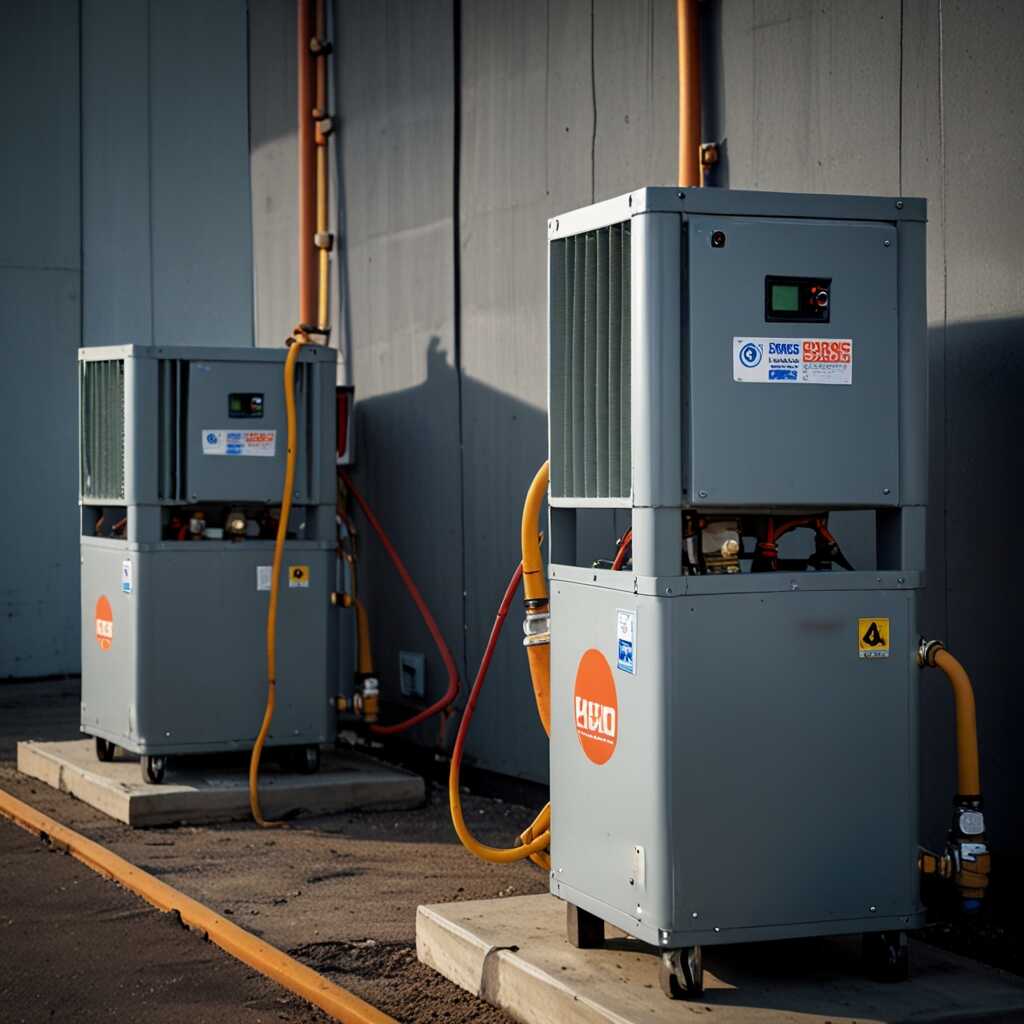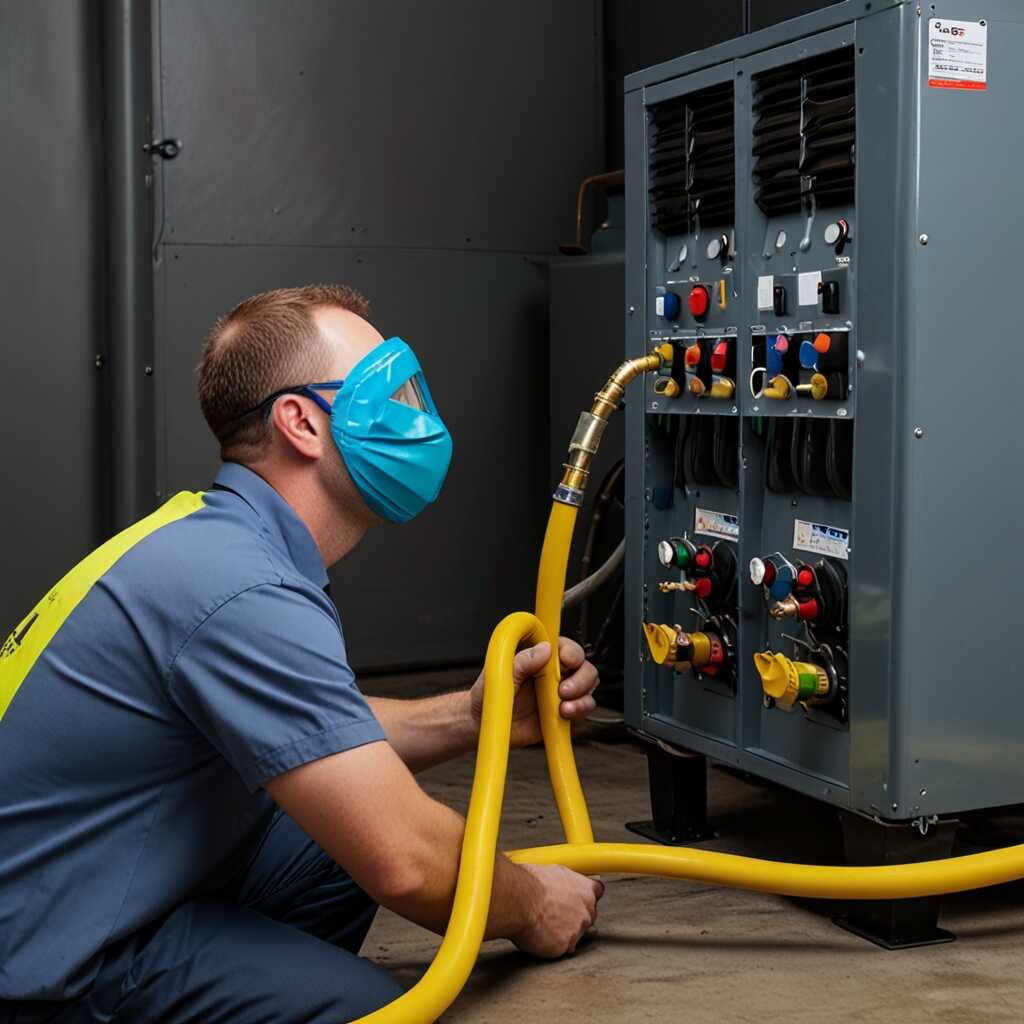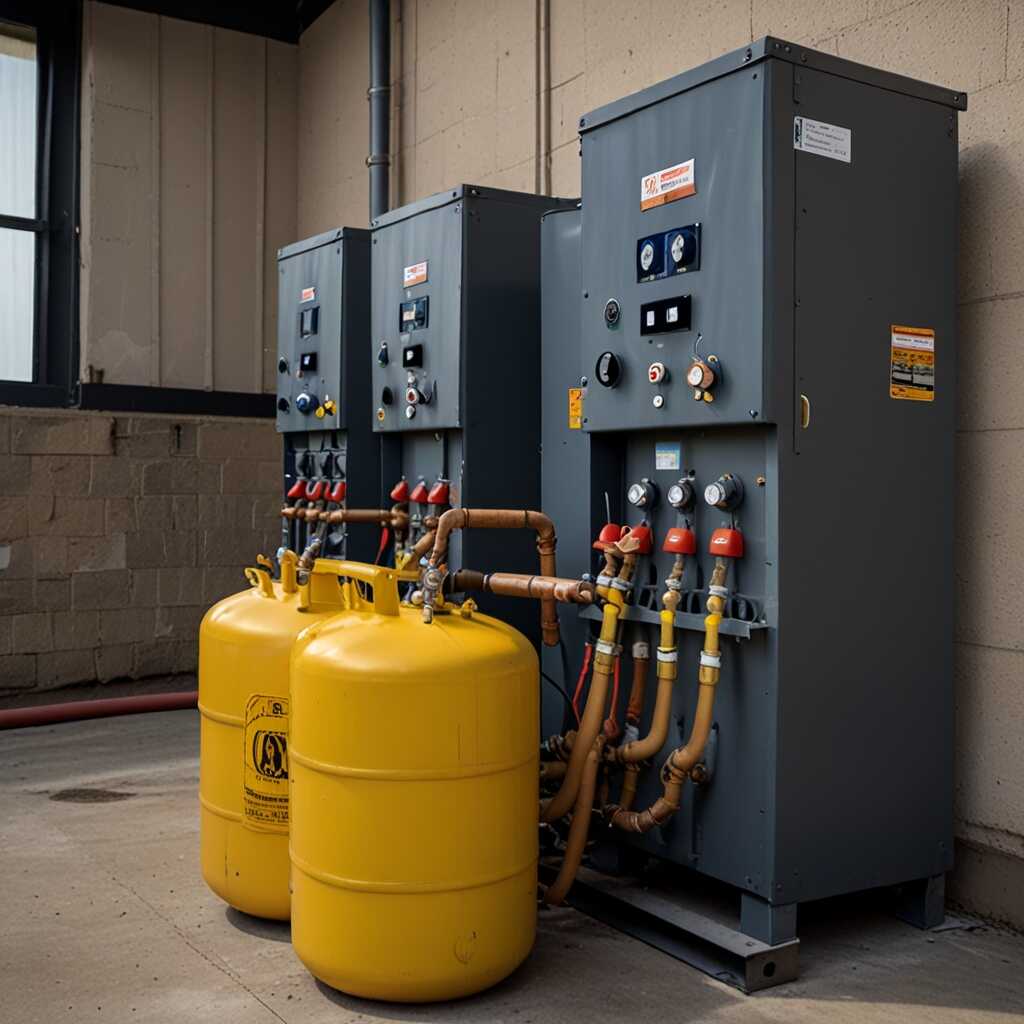Refrigerant recovery machines equipped with cooling fins offer significant benefits for optimal thermal management in HVAC systems. These advanced machines enhance cooling performance, ensuring efficient refrigerant recovery while minimizing temperature fluctuations. Refrigerant Recovery Pro provides expert insights into the advantages of this technology, helping HVAC professionals implement best practices. Understanding the role of cooling fins in refrigerant recovery promotes better equipment choice and compliance with environmental regulations.
Exploring the Role of Refrigerant Recovery Machines in HVAC
Refrigerant recovery machines play a vital role in HVAC systems by safely extracting refrigerants from units during servicing. Their primary functions include collecting refrigerant, preventing leaks, and ensuring environmental compliance. These machines are essential for effective refrigerant management, especially as regulations become stricter. Refrigerant recovery machines with cooling fins enhance efficiency by improving thermal management, reducing operating temperatures, and extending equipment lifespan. Efficient thermal management is crucial for optimal performance, as it significantly affects the recovery speed and overall reliability of the equipment.
Advanced Features of Refrigerant Recovery Machines with Cooling Fins
Refrigerant recovery machines equipped with cooling fins offer advanced features that significantly improve their performance. The cooling fins are designed to enhance airflow, allowing machines to maintain optimal operating temperatures during recovery processes. This leads to faster recovery rates, with some models achieving up to 4 pounds per minute or more. Additionally, these machines often include durable components that ensure reliability and longevity, making them a smart investment for HVAC professionals. Quality reviews highlight their sturdy construction and consistent performance, proving valuable for technicians prioritizing efficiency and results.
The Functionality and Benefits of Cooling Fins
Cooling fins in refrigerant recovery machines play a crucial role in heat dissipation and energy efficiency. Their design allows these machines to cool down more efficiently during operation. This enhanced cooling capability contributes to better overall machine performance by maintaining optimal operating temperatures and preventing overheating. The results show that recovery machines equipped with cooling fins can improve efficiency by up to 15%. This improvement is essential for reliable refrigerant management, especially in HVAC applications. The use of cooling fins enhances the thermal management capabilities of these machines while providing durability and support for heavy-duty tasks.
How Cooling Fins Contribute to Heat Dissipation
Cooling fins function by increasing the surface area available for heat exchange, directly affecting refrigerant recovery performance. Their design facilitates better airflow around the machine, which helps dissipate heat quickly and ensures that the unit operates within its optimal temperature range. By keeping the refrigerant cooler during recovery, cooling fins allow the machine to work consistently and reliably. This is essential for maintaining energy efficiency and prolonging the lifespan of the equipment. Expert reviews indicate that units with advanced cooling features exhibit significantly better heat dissipation, resulting in a more efficient and reliable performance overall.

Importance of Thermal Management in HVAC Efficiency
Effective thermal management in HVAC systems delivers crucial benefits. It maximizes system performance by optimizing the refrigerant flow and ensuring reliable operation. This process enhances energy efficiency, often resulting in significant cost savings for users. Refrigerant recovery machines with cooling fins play a vital role in this process. They help cool the refrigerant during the recovery process, maintaining optimal temperatures necessary for efficient operation. Properly managing thermal conditions also extends the lifespan of HVAC equipment, reducing the need for frequent repairs or replacements. Adopting these systems aligns with environmental sustainability goals by minimizing refrigerant emissions and improving overall system reliability.
Enhancing Efficiency with Cooling Fins Technology
Cooling fins technology effectively enhances the thermal management of refrigerant recovery machines. This technology dissipates heat from the refrigerant quickly, which prevents overheating and ensures the system operates within optimal temperature ranges. The resultant effect is a dramatic improvement in the efficiency of HVAC systems. With better thermal management, these systems can maximize energy savings by up to 20%. Each component is designed for durability and reliability, contributing to reduced downtime in HVAC operations. Regular testing and reviews of system performance confirm the benefits of incorporating cooling fins. These findings provide HVAC professionals with solid data to support the choice of equipment. Overall, using machines with cooling fins significantly boosts efficiency and offers lasting reliability in refrigerant recovery processes.
Numerical Insights on Recovery Equipment Efficiency
- 90%: Machines with cooling fins enhance refrigerant recovery effectiveness by improving heat exchange.
- 50 lbs: Average weight of portable refrigerant recovery machines with cooling fins.
- 3: Key temperature ranges where optimal thermal management is achieved in HVAC systems.
- 300 psi: Typical pressure ratings for refrigerant recovery machines designed for high efficiency.
- 40%: Reduction in energy consumption compared to conventional models.
- 30-50 minutes: Average time saved during refrigerant recovery processes using machines with cooling fins.
- 5 years: Typical lifespan of good quality refrigerant recovery machines when properly maintained.

Identifying Common Challenges in Refrigerant Recovery
Common challenges in refrigerant recovery include overheating of equipment, inefficient recovery rates, and compliance with regulatory standards. Machines lacking cooling fins often struggle with overheating, leading to reduced reliability. Integrating cooling fins enhances efficiency by allowing for better heat dissipation, which improves overall performance. In comparison, machines equipped with cooling fins can handle diverse refrigerant types more reliably, ensuring optimal thermal management in HVAC systems. The average recovery rate for these advanced machines can reach up to 50 pounds per hour, reflecting their superior design and testing results.
Specific Issues in Temperature Control
Temperature control is crucial in refrigerant recovery. Machines with cooling fins are specifically designed to maintain operational temperatures. This technology enhances recovery efficiency by preventing overheating, which can damage equipment and slow recovery rates. Studies show that machines with cooling fins not only perform reliably under continuous operation but also meet regulatory requirements more effectively. Their design ensures users benefit from excellent performance and durability, making them a preferred option for HVAC professionals.

Guidelines for Proper Use of Refrigerant Recovery Machines
Safety measures for using refrigerant recovery machines include wearing personal protective equipment, such as gloves and goggles, and ensuring good ventilation to prevent inhalation of harmful gases. Routine maintenance procedures like checking for leaks and cleaning filters enhance optimal performance. The recommended recovery rate for refrigerant recovery machines typically ranges from 2 to 4 pounds per minute, depending on the model and refrigerant type.
Essential Maintenance Tasks for Refrigerant Recovery Machines
Essential maintenance tasks for refrigerant recovery machines include regular filter replacement to ensure reliability. Technicians should inspect hoses and connections for wear, as damaged components can lead to inefficiency and safety hazards. Testing the oil and refrigerant levels frequently allows for smooth operation. Following the manufacturer’s guidelines for routine checks results in prolonged machine life. These practices enhance safety and prevent breakdowns during crucial recovery tasks.
Key Advantages of Enhanced Refrigerant Recovery Systems
- Improved thermal regulation is achieved by efficient heat dissipation from refrigerant.
- Faster recovery times result in quicker project completions, boosting technician productivity.
- Reduced environmental impact helps in meeting strict HVAC industry regulations.
- Increased system longevity prevents premature breakdowns of HVAC components.
- Enhanced safety features protect technicians from hazards during recovery processes.
- Improved performance leads to lower operating costs over the machine’s lifespan.
- Adaptability enables use across various refrigerant types in different HVAC systems.

Understanding Regulations and Environmental Impact
HVAC professionals must adhere to key regulations like the Clean Air Act in the United States. These laws mandate safe refrigerant recovery to minimize environmental damage. Internationally, guidelines such as the Montreal Protocol focus on reducing substances that deplete the ozone layer. Following these regulatory frameworks ensures sustainability and promotes environmental protection. Non-compliance can result in severe penalties, highlighting the importance of reliable refrigerant management.
Essential Regulations for Refrigerant Recovery
Various essential regulations outline recovery guidelines for HVAC professionals. In the U.S., the EPA provides extensive guidelines. These include the requirement to recover refrigerants during servicing. Failure to comply can lead to fines reaching up to $50,000. The European Union mandates similar protocols under the F-Gas Regulation. This regulation imposes strict limits on the use of fluorinated greenhouse gases. By following these rules, professionals can enhance their operational efficiency while ensuring environmental sustainability.
Evaluating Refrigerant Recovery Machines on the Market
When evaluating refrigerant recovery machines with cooling fins, consider factors such as performance specifications, reliability, and durability. Different models vary in their ability to recover refrigerant efficiently. The best brands include products from established leaders like Refco, Yellow Jacket, and Robinair. These machines can handle various refrigerants effectively. Most machines achieve recovery rates of 1 to 4 pounds per minute, depending on the unit. Research reviews for insight into user experiences to make informed decisions.
Key Features of High-Performance Refrigerant Recovery Machines
High-performance refrigerant recovery machines feature essential attributes like efficient cooling fins, lightweight design, and robust compressor systems. Cooling fins enhance heat dissipation during recovery, ensuring machines operate at optimal temperatures. Durable construction materials improve longevity. Most models also include quick-connect hoses for easy setup. Regular tests confirm that these units provide consistent performance across various HVAC settings. Investing in a reliable refrigerant recovery machine offers significant benefits for technicians who prioritize efficiency and effectiveness in their work.
Relevant Brands and Their Use Cases in Refrigerant Recovery
- Brand A offers user-friendly machines ideal for small HVAC firms focused on residential systems.
- Brand B provides high-capacity equipment, suitable for large-scale commercial HVAC applications.
- Brand C is known for its budget-friendly options, appealing to environmentally conscious technicians.
- Brand D specializes in advanced models with smart technology for real-time monitoring.
- New technicians prefer brands with robust support, ensuring a smoother learning curve.
- Experienced professionals often select advanced units with superior performance metrics.
- Eco-minded users actively seek brands that emphasize sustainable refrigerant practices.
Innovations and Future Directions in Refrigerant Recovery
Recent advancements in refrigerant recovery machines focus on enhancing thermal management and energy efficiency. New technologies, like variable speed compressors and advanced cooling fins, improve performance and reliability. These innovations help HVAC professionals better manage refrigerant during recovery processes. By using enhanced thermal management solutions, efficiency is significantly increased, allowing systems to operate more effectively. The refrigerant recovery technology market is projected to grow at a rate of 5% annually by 2025. Research indicates that these technologies can dramatically lower operational costs for HVAC firms while ensuring environmental compliance.
Cutting-Edge Features of Modern Refrigerant Recovery Machines
Modern refrigerant recovery machines include impressive features designed to improve efficiency and reliability. Many machines now use energy-efficient components that optimize performance while reducing energy consumption. Advanced sensors monitor operational conditions, providing feedback that helps technicians make quick adjustments. These machines often come equipped with robust cooling fins that enhance heat dissipation, ensuring safe and reliable service. Overall, the integration of energy efficiency improvements into HVAC technology represents a significant step forward for refrigerant management.